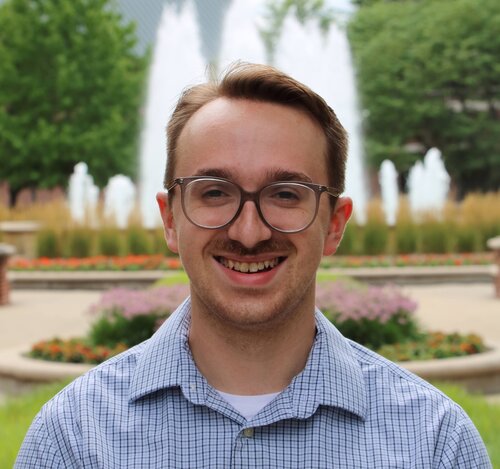
Contact Information
Research Areas
Biography
Hello! I am a 2nd-year PhD student in the Department of Climate, Meteorology, & Atmospheric Sciences at the University of Illinois Urbana-Champaign, under the advisement of Dr. Larry Di Girolamo. I am researching to adapt machine learning operationally to improve satellite cloud detection and stereoscopic retrievals.
Before coming to University of Illinois, I attended Rochester Institute of Technology (RIT) for my bachelors in computer science where I graduated magna cum laude in May of 2022. While at RIT, I specialized my classes for A.I. and machine learning to advance my education within this subsection of computer science. By tailoring my classwork to this subject area, I gained education and skills in computer vision, data science, search engines, and neural networks. Additionally while attending RIT, I acquired a minor is Geographical Information Systems, where I gained education is mapping softwares, geographical data visualization, and remote sensing.
Simultaneously while attending RIT, I was a research intern for NASA Langley Research Center (LaRC) from 2021-2022, where I worked on the Cloud Detection Neural Network project under the advisement of Dr. Snorre Stamnes. Under this internship, I researched the capabilities of using 2-D convolutional neural networks to detect clouds within NASA field campaign imagery. We used NASA imagery from mounted cameras on the NASA ACTIVATE and Camp2Ex flights and trained models to detect frames with clouds with above 95% accuracy. This prior research exposed me to the overlap of machine learning and atmospheric sciences, where I now am researching how segmentation convolutional neural networks can be used to improve cloud masking techniques for the NASA MODIS and MAIA instruments.
Research Interests
- Remote Sensing
- Deep Learning
- Computer Vision
- Stereo Algorithms for Remote Sensing
- Radiative Transfer
Research Description
The field of satellite remote sensing faces wide scale issues with true atmospheric property retrievals, such as PM25 aerosols, due to the presence of clouds. Clouds obstruct atmospheric retrievals due to their back scattering effects within the atmosphere of solar radiance, resulting in severe noise or erasing detection properties for atmospheric particles. My research focuses on using machine learning modeling, specifically adaptations of convolutional neural networks, on radiance data to mask out where clouds are within satellite imagery. Currently, cloud masking techniques implement thresholding algorithms, with ranging complexities, on radiance values to produce cloud masks that are either cloud or clear conservative. These techniques are tailored for the specific use that research scientist will use them for, (i.e whether they are looking for definite clear or definite cloudy pixel readings). We believe that using advanced methods, such as machine learning, will provide more accurate clouds masks due to convolutional layers giving per-pixel cloud masks an extra spatial analysis advantage, unlike current thresholding techniques. I will be producing models for MODIS and proxy-MAIA data, and comparing our results with current cloud masking techniques with quantitative and qualitative analyses.
Education
- PhD Atmospheric Sciences, University of Illinois at Urbana-Champaign (In Progress)
- M.S. Atmospheric Sciences, University of Illinois at Urbana-Champaign (August 2024)
- B.S. Computer Science, Rochester Institute of Technology, (May 2022)
- Minor in Geographical Information Systems
- A.S. Computer Science, Monroe Community College (May 2019)